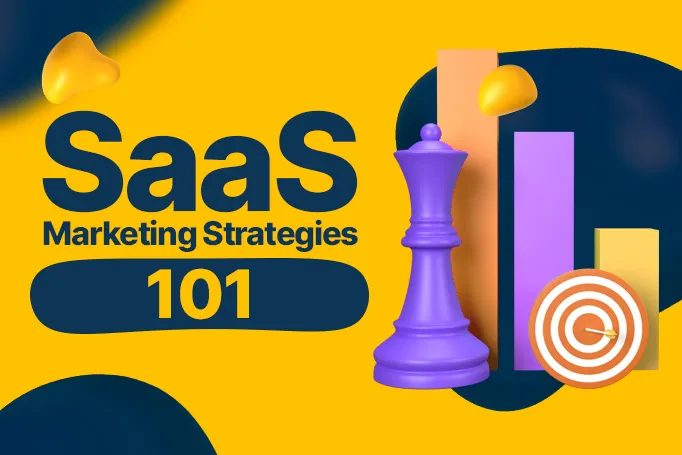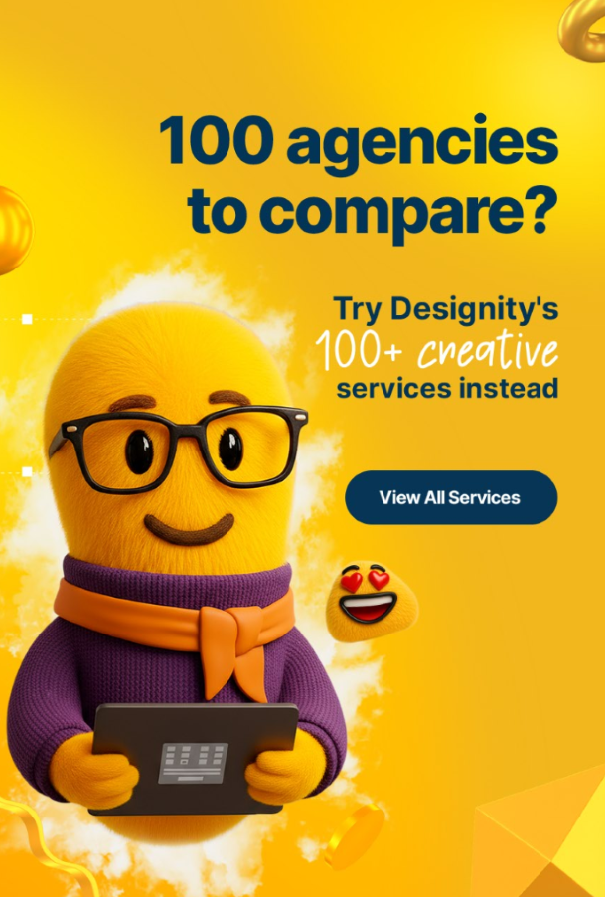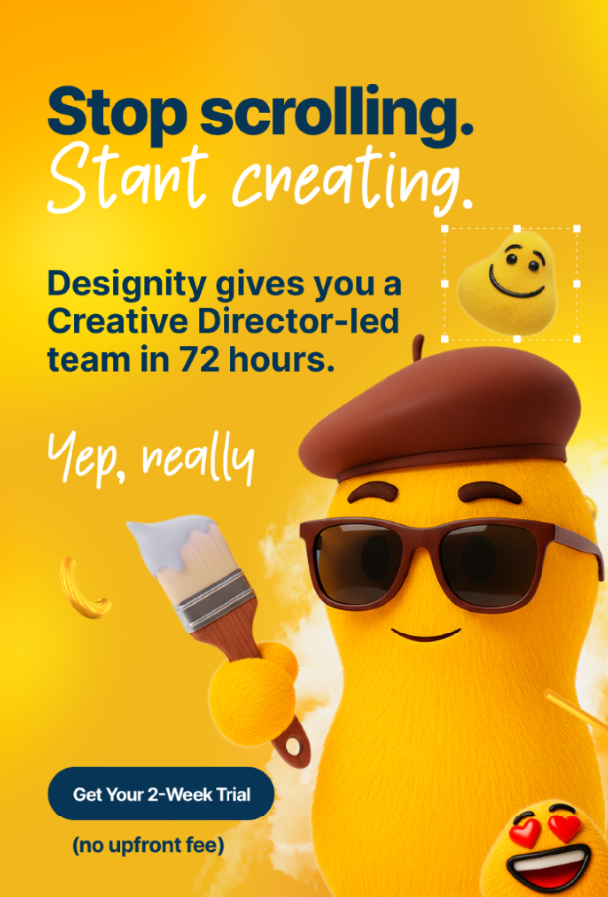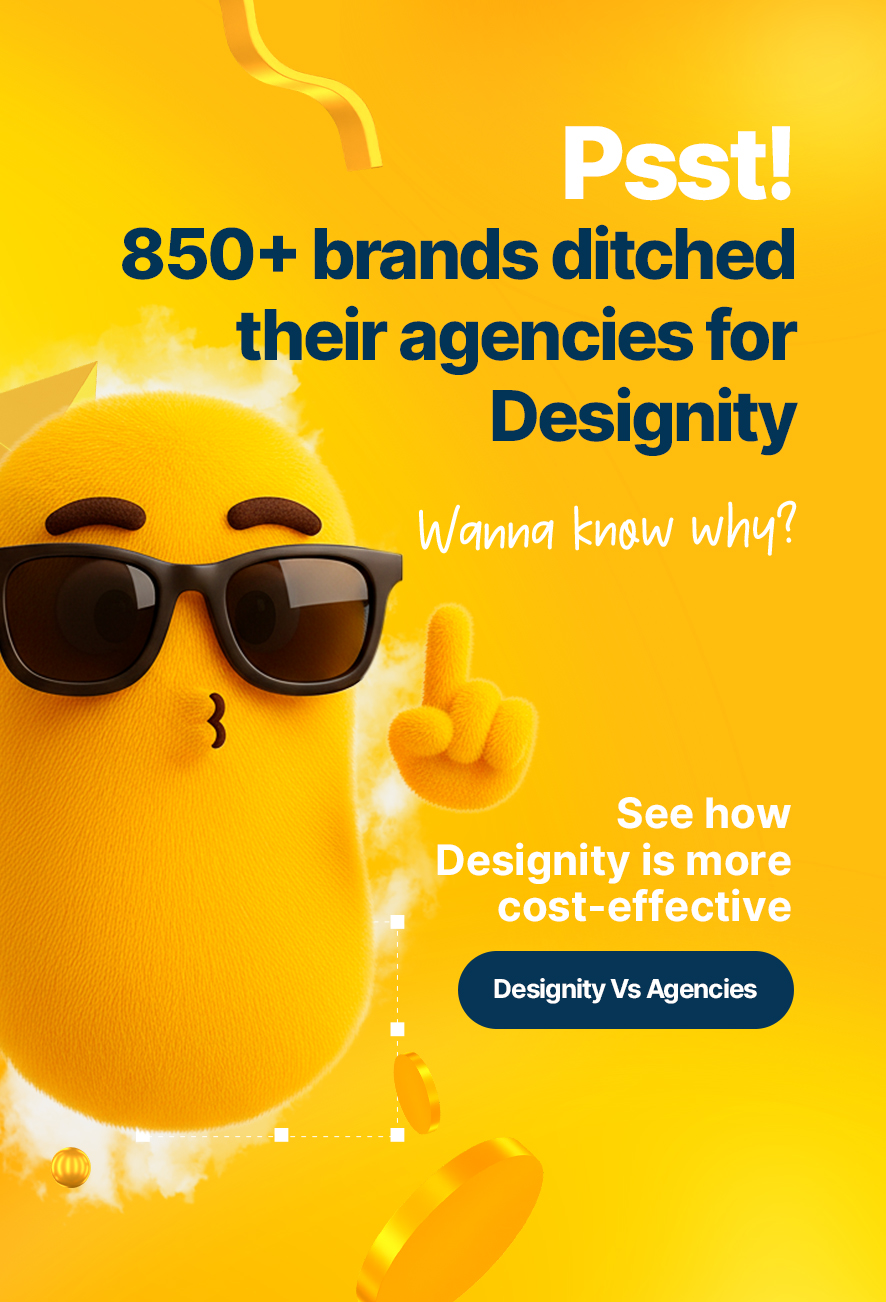With so many digital services available these days, having a well-defined and effective SaaS (software as a service) marketing strategy is the only way for your brand to succeed!
However, because of the nature of SaaS products, the technique used to market them has to be very different from techniques and strategies used to promote traditional products and services.
So, what’s the best way for you to market your SaaS products? A way that sets you apart, communicates your value, and compels potential customers to stop scrolling and take a look at what you have to offer?
If you’re looking to build out the most effective strategy to market your brand, then we’re here to help!
Whether your SaaS product is brand new on the market or your brand is branching out into the SaaS world, this blog is going to give you the tools you need to build a winning strategy that will help you acquire and retain more customers!
The Difference Between SaaS Marketing Strategies and Traditional Marketing Strategies
If your brand is new to the SaaS world, you might be wondering just how different your marketing tactics have to be.
We’ll shine a bit of light for you.
Traditional marketing is much more diverse than SaaS marketing and can vary greatly depending on the specific product or service a brand is offering. And while you will probably see digital ads for traditional products and services (everything is digital nowadays, remember?) you’ll also definitely see some more traditional print ads or TV spots to go with them.
These ads will typically focus on price, value, and appeal, aiming to reach a broad audience and generate immediate sales with discounts and other promotions.
SaaS marketing, on the other hand, focuses much more on digital channels. Ads for SaaS products tend to stay online and focus on things like price, features, ease of use, and the value that ongoing use of the product will bring.
How to Build a Successful SaaS Marketing Strategy

To be successful, your SaaS strategy is going to have to speak to the cost-effectiveness of your subscription models, the differentiators your product has in both features and functionality and the value it brings if you’re going to attract more of your target audience to your brand.
Here are three things you’ll need to know to build an effective SaaS strategy that lets you achieve those goals.
1. Know Your Customer
First things first!
If you want to turn your audience into future paying customers, you’re going to have to understand their motivations and pain points on a deeper level.
Here’s how:
Analyze Customer Behaviors
The specific metrics and KPIs you prioritize when building your campaign will depend on your product and your goals, of course, but keeping track of metrics on user engagement, conversions, product usage, and more can help you learn more about your customers to make more data-driven decisions.
Understanding your customer analytics also helps you to better understand what your customers are looking for in a SaaS product, which is essential for you to …
Understand Your User Personas
If you don’t have any already, you’ll need to use your customer behavior data to build out some user personas.
If this is a new thing for you, user personas are fictional representations of an individual member of your customer base. They are highly detailed with information like demographics, goals, pain points, points of resistance, motivations, and more.
By using your data to fill out detailed user personas, you’ll be able to better understand what your customers are looking for and what type of messaging will work best to connect with your audience at a meaningful level that more accurately hits their pain points.
Your marketing team will definitely need to refer to these personas when they’re crafting their content marketing strategy to know what type of content works best.
(If you aren’t sure how to collect the data you need to build out accurate user personas, just visit our blog post, “Kickstart Your ABM Campaign: User Personas” for a handy guide.)
Conduct User Surveys
If your product has been on the market for a while now, it is extremely beneficial to get some direct feedback from your existing customers as well.
Consider sending out customer satisfaction surveys, which can include the Net Promoter Score (NPS), a metric used to measure the loyalty of customers to a company.
Use your data to adjust your product as needed to better serve your customers and give them the experience they’re looking for.
Segment Your Audience
The way you segment your audience can also have a positive effect on your marketing campaign.
Segment your audience by demographics, behaviors, and more to enable your brand to deliver personalized and more relevant content and messages.
This not only enhances the value your content can bring but also greatly increases the chances of conversion.
2. Know Your Competition

After you’ve thoroughly researched your audience, it’s time to lather, rinse, and repeat the process for your direct competitors.
Here are some steps you can take for a better-informed marketing strategy.
Competitor Analysis
Knowing what your competitors in the SaaS business are doing is crucial to carving out a piece of the market for your brand.
Analyze your competitors, everything from their website to their social media pages, pricing, customer service, and more to identify their strengths and weaknesses.
Glean as much information as you can from their existing strategies. What are they doing right that your brand needs to do as well? What are they doing wrong that you can improve upon to differentiate your brand from others?
Use an internal and external SWOT analysis to help you find your position and make better-informed decisions. Lay it out like this:
- Strengths — The attributes or resources that give a company a competitive edge over others. (Examples: strong branding, streamlined onboarding process)
- Weaknesses — Areas where a company may be lacking or not performing up to the same level as other areas. (Examples: outdated tech, poor financial management or organization)
- Opportunities — External factors or situations that your brand can use to your benefit. (Example: Shifting customer trends, tech advancements, emerging markets)
- Threats — External factors that have the potential to harm your organization or stunt its growth. (Example: regulatory changes, a big ol’ global pandemic, recessions)
Competitor Benchmarking
It also helps to benchmark your product.
Compare your SaaS product to industry standards and to your competitors using the KPIs that are most relevant to your objectives.
The KPIs you use are up to you and your brand, but some common KPIs to analyze and compare are:
- Customer satisfaction scores — The level of satisfaction among your SaaS customers with your products. This often involves surveys or other feedback methods to collect data.
- Market share — The portion of a specific market that your brand or product controls in comparison to the total market.
- Product quality — How well your SaaS products meet or exceed your customer’s expectations and industry standards.
- Pricing — The effectiveness of your pricing strategies.
- Customer acquisition costs — How much it costs to acquire a new customer, including marketing and sales expenses.
- Revenue growth — The increase of your company’s total income over time.
If your benchmarking identifies areas that you can improve on, meet with your team to come up with an action plan to narrow the gap.
And this isn’t something that should only happen during the planning process of your marketing campaign. It helps to do this regularly, as it keeps your SaaS product relevant and up to date with industry and customer trends.
And, hey, speaking of industry trends …
Tracking Industry Trends
It’s also very important to stay up to date with industry trends in SaaS marketing.
Keeping your brand up to date keeps you relevant, competitive, and in compliance as standards ebb and flow. It also ensures that your product is still what your customers are looking for!
To keep up with trends, subscribe to industry-related publications, newsletters, and more. You can also keep up with any SaaS-focused conferences, thought leaders, and online communities to stay on top and keep your company up with the times.
And though it's good to stay up with the trends, there’s nothing wrong with being a trendsetter yourself! Stay open to experimentation and don’t be afraid to test new strategies or tech to see how it fits with your marketing efforts.
3. Know Your Value
Once you’ve got your customers and your competitors down, it’s time to look in the mirror and figure out some things about your brand and your product!
Don’t be modest either. Know your own value and find a way to …
Communicate Your Unique Selling Points
What is it that makes your product unique? What differentiates it from your competitor’s similar products?
Is it your unique pricing structure? Your outstanding customer service? The features and functionality of your product?
Whatever it is, if you want to convince your customers to choose your brand over another’s, you’ll have to be able to communicate why your product is the better choice for them.
Your marketing material and content like website copy, social media posts, and ad campaigns should reflect these unique selling points and be consistent in their messaging.
Identify Market Gaps
Identifying market gaps is a pivotal step in positioning your SaaS product for success.
Do some market research to pinpoint areas where customers' needs aren’t being adequately met and to find underserved segments where your SaaS product can provide the most value.
Customer feedback can be a goldmine for insight into this. Review your competitors (and your) customer reviews and suggestions to reveal any unmet needs or areas for improvement that you can capitalize on.
Craft a Compelling Value Proposition
Then you’ll need to craft a compelling value proposition.
Your value prop is a clear statement that explains how your product or service solves a customer’s problem. It also needs to explain the unique benefits your product has and why choosing your product over a competitor’s is the right choice to make.
Use your unique selling points to craft your value proposition and make sure it identifies the unique features, benefits, and values that your SaaS product brings to the table.
Popular SaaS Marketing Strategies to Grow Your Business

Once you’ve built a solid foundation on which to lay your marketing strategy, then you’ll need to decide how best to go about it!
Here are some popular SaaS marketing strategies for your brand to try to get more customers into your sales funnel and see those conversion rates go up!
Content Marketing
Content marketing plays a huge role in SaaS marketing strategies!
Craft comprehensive content that provides value to your audience and keeps them reading, watching, and coming back for more. The type of content you create will be up to your users, your product, and your brand, but popular choices to inform, educate, or entertain your target market are:
- Blog Posts: Regular blog posts about topics that are relevant to your industry and product allow you to showcase your expertise, provide valuable information, and attract organic traffic from search engines!
- Infographics: These captivating visual aids help you simplify even the most intricate data into easily digestible graphics. They’re highly shareable on social media as well, making them ideal for conveying stats and other information your customers need to know.
- Videos: Whether presenting product demos, tutorials, or promotional content, a good video can be a powerful means of engaging your audience and illustrating how your SaaS solution caters to their pain points and needs.
- Ebooks: Ebooks serve as more comprehensive references for your customers, giving them a way to dive deep into subjects concerning your SaaS product. They can also be used to capture email addresses and other customer information to give you qualified leads to go on.
Referral Programs
Using a smart referral program can turn your happy customers into superfans of your SaaS product. This way, they'll gladly refer new users, basically becoming your product's biggest cheerleaders and advocates.
Here are some ways to get those referrals:
- Offering Rewards: Set up a rewards system that's just too good for your customers to resist and benefits both your loyal users and their friends. This could include discounts, credits, or exclusive perks!
- Easy Tracking: Make sure you’re using a reliable system to track referrals more effectively. This way, everyone gets the rewards they deserve.
- User-Friendly: Keep things simple for your customers by providing clear instructions and easily accessible referral links or codes.
- Shareable Content: Craft content that your customers can’t help but share and use buttons to make it easy for them to introduce your SaaS product to their inner circles.
- Efficient Automation: Save time and effort by automating the referral process from start to finish, making it easy and hassle-free.
- Social Sharing: Let your customers share referrals on their favorite social media platforms to extend the reach of your program and get in front of more potential customers.
SEO Strategies
Elevating your SaaS website's organic traffic hinges on your SEO. Use tools like SEMrush to research some keywords and long-tail phrases that are relevant to your brand and align with your SaaS offerings.
Here are other ways to optimize your SEO and boost your online visibility:
- On-Page Optimization: Perfect your website's on-page elements, such as meta titles, descriptions, and header tags, to give search engines exactly what they're looking for.
- Backlink Building: Establish strong connections with respected websites in your industry to boost your website's domain authority.
- Content Creation: Craft content that informs and captivates your audience in a meaningful way! Quality content that keeps readers on page and hits the right keywords can significantly boost your SEO.
- User Experience: Make sure that your website loads quickly, provides a seamless mobile experience, and offers an easy and enjoyable browsing experience.
- Tools and Analytics: Use powerful tools like Google Analytics and Google Search Console to keep an eye on your website's performance, pinpoint areas for enhancement, and monitor keyword rankings.
- Algorithm Updates: Regularly assess your SEO with audits to identify and resolve any technical issues that might be affecting your website's visibility and performance.
- Audits and Technical SEO: Conduct regular SEO audits to identify and address technical issues that may affect your website's performance and visibility.
- Comprehensive Content Strategy: Develop a comprehensive content strategy that's tailored to each stage of the buyer's journey and addresses your audience's informational needs.
Landing Page Strategies
A good landing page serves as a welcome mat to your SaaS product, so it’s important that you make the right impression. Ongoing enhancements are essential to ramp up user engagement and conversions. Whether your goal is to have users join, seek further details, or perform a specific task, optimizing your landing pages can create a noticeable impact on how many leads and conversions you bring in.
- Experiment with A/B Testing: Play around with various elements like headlines, images, form fields, and call to action buttons to find out what resonates best with your audience and boosts sign-up rates.
- Engaging and Clear Language: The copy on your landing page should not just be clear but captivating too. Use persuasive and catchy copy to emphasize how your SaaS product addresses user pain points and offers value!
- User-Friendly Forms: If your aim is to gather user information, keep your forms short, straightforward, and user-friendly. Ask only for necessary details and make the submission process quick and hassle-free.
- Enhanced Visuals: Including visual aids like product images, videos, and graphics helps to better visually represent your SaaS solution. This helps your visitors to better understand your product and the features that it offers.
- Mobile-Friendly Experience: Many of your visitors will stumble onto your landing page while scrolling through social media or the internet on their mobile devices. Providing a seamless experience on devices of all sizes is crucial to moving customers through your sales funnel.
- Faster Loading: A slow, sluggish landing page is a turn-off for users. Optimize the page to load quickly for a frustration-free experience.
Customer Case Studies
Customer case studies are powerful tools for any marketing strategy!
These real-life success stories are great for building trust and credibility, offering your users a tangible glimpse into how your solution can transform their world. They're your chance to showcase how your product has made a meaningful difference for others and how it can do the same for your prospects.
Here are what your case studies should include:
- In-Depth Success Narratives: Dive deep into the customer's journey. Explore the challenges they faced, how they came to find your SaaS product, and how it addressed their needs.
- Quantifiable Results: Showcase outcomes that can be measured. Enhanced efficiency, cost savings, revenue growth, or whatever metrics you choose, remember that numbers provide credibility and better highlight your solution's value.
- Customer Testimonials: Feature direct quotes from the customers featured in the case study for that personal touch.
- Great Visuals: Enhance your storytelling with images, charts, and infographics that simplify complex information.
- Structure and Storytelling: Treat your case study like a story. Start with the customer's challenge, move on to their discovery of your product, and conclude with the happy ending featuring their awesome results.
- Variety of Use Cases: Over time, aim to build up a library of case studies covering different use cases, industries, and customer profiles. This allows potential users to discover stories that resonate with their specific needs.
Didn’t find a strategy that spoke to you from those five? Stay tuned for tomorrow’s blog, “Top 30 SaaS Strategies” to see if you find something that works for you and your brand!
<div class="c-blog_comp-cta cc-component-1"><div class="c-blog_comp-cta-left"><div class="c-blog_comp-cta-left-wrap"><img src="https://global-uploads.webflow.com/61cdf3c5e0b8155f19e0105b/6369722e59155470b6840033_Potential-clients.png" loading="lazy" alt="" class="c-blog_comp-cta-left-img"></div></div><div class="c-blog_comp-cta-right"><div class="c-blog_comp-content"><div class="c-text-wrapper cc-mb-32"><div class="c-title-4 cc-bold"><strong>Want to save money without sacrificing the quality?</strong></div></div><div class="c-text-wrapper"><div class="c-text-2">Say goodbye to traditional, expensive agencies and unreliable marketplaces. Say hello to Designity.<br></div></div></div><div class="c-blog_comp-wrapper"><a href="/pricing" target="_blank" class="c-button cc-primary cc-inverted w-button"><strong>Get Your 2-Week Trial</strong></a></div></div></div>
Designity: Your SaaS Marketing Experts
Putting together a winning SaaS marketing strategy is the key to reaching your target marketing, acquiring customers, and keeping them loyal to your brand.
Only …
Designing a strong strategy and creating the content that you’ll need to pull it off is a tall order. If you’re a smaller business, doing so might be stretching your resources and manpower to the limit.
We have a solution, however.
Designity is made up of the top 3% of US-based creative talent, including digital marketers, branding experts, copywriters, graphic designers, web developers, animators, and anyone else whose skills your brand needs to create a powerful marketing strategy and bring it to life.
And since each Designity account comes with an experienced Creative Director, the only part you’ll need to play is giving us direction and approving deliverables.
Your CD will handle everything else, from sourcing and managing Creatives with the perfect skill set for your projects to building out timelines and helping you launch your product.
Have a look at our portfolio to see what we’ve been able to do for SaaS companies just like yours and, when you’re ready, book a demo call.
Try out our services with a no-obligation, two-week trial and if we’re not exactly the marketing and design experts you were looking for, then walk away and owe Designity absolutely nothing.
It’s a win-win. So, go ahead and book that demo call today.
We can’t wait to help your business grow.










